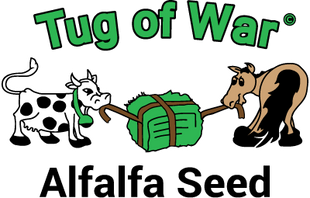Description
CURRENTLY OFFERED AT $2.79 PER POUND
Hairy Vetch is a viney, cool season legume best used in a crop rotation for erosion control or as a cover crop. It can also be used in feed as hay, silage or grazing due to its high crude protein content. Hairy Vetch performs best on well-drained soils and mild soil conditions.
Planting Depth: 0.5-1.5 inches
Planting Rates: 25-30 lbs per acre for broadcast or disking. Increase rate by 3 lbs per acre for dormant seeding.
Planting Dates: Fall (Aug-Sept), Winter (once weather stays <40*). For fall planting plant at least 40 before first killing frost.
*Product ships in 50 pound bag.
General Information
As said above, HV is a viney, cool season legume with stems 2-4 ft long. Leaves are composed of 10-20 narrow leaflets & are terminated by branched tendrils. Flowers are usually purple in color. HV provides good ground cover for erosion control during the fall, winter, and spring and is valuable for use in no-till systems due to its high biomass production. HV also improves soil tilth and fixes large amounts of Nitrogen (N), which can be utilized by subsequent crops in a rotation. Due to its high crude protein content, HV can be used for hay, silage, or grazing further helping soil fertility through the natural fertilization process.
Adaptation
HV does best on well-drained soils and is not recommended for poorly drained soils. It prefers a soil pH between 6.0 and 7.0 and is adapted to high soil fertility status (phosphorus (P), potassium (K), and sulfur (S)). Due to its winter hardiness and being more drought tolerant than other vetches, it is widely adapted throughout the US. HV develops best under cool temperatures, on fertile loamy soils. HV can also be very productive on sandy or clay soils and is known to grow well on light soils that are too sandy for crimson clover.
Establishment
While possible to spring plant, HV is best planted in late summer to early fall, or early winter for a dormant seeding. HV is often planted with cereal rye, oats or other winter grains for improved winter survivability, greater winter annual weed control, and increased erosion control. For mixtures one should reduce the HV seeding rate by up to 25% and the grain seeding rate by 50% from the rates recommended for pure stands. If using as a cover crop, HV does not normally require fertilizer unless the field has a severe K or P deficiency.
A good place in a crop rotation for HV establishment is after a small grain harvest. Make sure crop residue from the previous crop is well distributed if establishing HV with no-till methods and kill existing vegetation with a burndown herbicide. More often than not, a fair amount of volunteer small grain will come up with the HV in the fall. This should be considered an advantage rather than a disadvantage. The small grains provide a quick cover, whereas the HV grows slowly in the fall. The small grains help retain and absorb nutrients such as nitrogen, phosphorus, and potassium. The small grains also provide mulch that is more resistant to decomposition and contributes to the buildup of soil organic matter. The C/N (carbon-to-nitrogen) ratio of the residue tends to be lower if the small grain is grown in conjunction with hairy vetch, contributing to faster decomposition of the small grain residue and less nitrogen immobilization.
It is possible to establish hairy vetch after early corn silage harvest. However, attention needs to be paid to the herbicide program used; check the rotational restrictions on the label. Although HV is not generally included as a rotational crop on the herbicide label, alfalfa and clover rotational restrictions should be similar to HV. Another option is to broadcast HV in standing soybeans, but this is uncommon because of the expense of the seed and the higher risk of failure with this method than if vetch is drilled. Seeding HV after corn grain or soybean harvest is not recommended because the vetch is then unlikely to survive the winter.
Management
HV best performs well in rotations with conventional and no-till planted row crops. Using this system, the HV is either mechanically or chemically terminated during full bloom to allow for peak N accumulation and maximum vetch kill prior to planting the row crop. If being grown for hay, HV should be cut in the early bloom stage, and if for grazing, wait until the plants are at least 6 inches high.
Shipping
Payment & Security
Your payment information is processed securely. We do not store credit card details nor have access to your credit card information.


